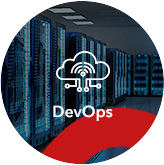National Aeronautics and Space Administration (NASA)
Case Study
NASA has built, operated, and maintained a number of heavily used applications that provide content to internal technical stakeholders and end users from around the world. NASA needed an integrated, Cloud-based web delivery capability that would enable the reliable delivery of high-volume applications and huge amounts of scientific data, media in many forms, and other types of digital content. The web delivery capability also needed to be able to support huge surges of traffic related to launches of spacecraft and weather and scientific events.

The National Aeronautics and Space Administration (NASA) is an independent agency of the executive branch of the federal government of the United States responsible for the civilian space program, as well as aeronautics and aerospace research.

Our Work
Working with our partner, Infozen (now Mantech), we made effective and efficient use of the AWS public cloud and DevSecOps tools to enable NASA to achieve:
- Transform NASA’s IT infrastructure and application services to operate in the AWS cloud to better meet evolving stakeholder needs and support mission success
- Enhance and strengthen IT security to ensure the integrity, availability, and confidentiality of NASA’s critical data and IT assets
- Identify, test and adopt new information technology that would make NASA’s mission more capable and affordable
- Provide enterprise resources and processes that support mission success and allow NASA to attract and retain highly performing IT workforce
We supported:
- The video streaming for NASA TV
- The video streaming for the solar eclipse of August 21, 2017, which was the the most watched, uninterrupted live-stream event of all time
- The selection, configuration, and deployment suite of DevOps tools
- The implementation of a serverless application architecture
- The refactoring of NASA’s Content Management System to operate effectively in the Cloud
Our areas of work included:
- Implementing the Infrastructure as a Service (IaaS), Platform as a Service (PaaS) and Software as a Service (SaaS) capabilities in AWS for heavily used internal and external web applications and sites. Heavily leveraged on AWS cloud services such as EC2, RDS, ELB, ECS, Route 53, S3, IAM, SQS, SNS and CloudWatch.
- Building Infrastructure as Code (IaC) services to launch infrastructure for clustered environments as a Service. Our fully automated IaC process allowed NASA to create new environments in an automated fashion as needed. We also enabled NASA to turn off and on environments when not in use to lower AWS costs. We utilized AWS CloudFormation, Autoscaling, Ansible, and Python to develop and setup the Infrastructure as Code processes.
Benefits to NASA:
- High performance and availability – The ability to execute and support zero-day deployment with no user downtime
- Ability to support huge traffic surges – driven by space-related and weather events.
- Adoption of Modern software development and operations processes – specifically tailored to operating in the Cloud
- Lower operating costs – through better management of computing resources
- Real-time application monitoring – via Cloud-based application performance management tools
- Infinite scalability – through automation and the use of modern Cloud platforms
- Improved technical skills of the internal team – including knowledge of the latest development tools and DevSecOps processes
- Enhanced security – by embedding modern security practices into every step of the development to deployment process



